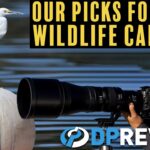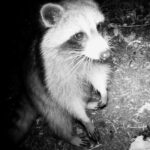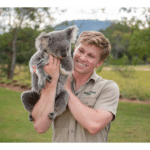Key Takeaways
-
The Sony Alpha A1 offers unprecedented 50.1 megapixels resolution, perfect for capturing the intricate details of wildlife.
-
With a fast autofocus system and 30 FPS continuous shooting, it’s ideal for photographing fast-moving subjects like jaguars.
-
The camera’s 8K video capability allows for stunning wildlife documentaries with crisp, high-resolution footage.
-
Navigating jaguars’ dense habitats requires not only skill but also the right gear, such as the Sony 600mm f/4 GM lens and Sony 2X extender.
-
Remote triggers and monitoring systems are essential for capturing jaguars without disturbing their natural behavior.

“Royalty-Free photo: Leopard sitting …” from www.pickpik.com and used with no modifications.
Capturing the Elusive: Documenting Jaguar Photography & Videography with Sony Alpha A1
Imagine you’re in the heart of the jungle, the air is thick with humidity, and every sense is attuned to the natural world around you. You’re not just a visitor; you’re a storyteller, ready to capture one of nature’s most secretive creatures: the jaguar. This is where the Sony Alpha A1 comes in, a game-changer in the realm of wildlife photography and videography.
Why Jaguars Present a Unique Challenge
Jaguars are solitary and elusive, making them one of the most challenging subjects for wildlife photographers. They thrive in dense rainforests, where the play of light and shadow can turn a clear shot into a missed opportunity in an instant. But with challenges come rewards, and securing that perfect shot of a jaguar in its natural habitat is a moment of triumph unmatched in wildlife photography.
Revolutionizing Jaguar Photography & Videography with Sony Alpha A1
The Sony Alpha A1 has raised the bar for what’s possible in capturing the essence of these majestic animals. Its cutting-edge technology provides the speed and precision required to document jaguars, whether they’re lounging on a riverbank or in the midst of a chase.
Decoding the Dense Habitat: Insights into Jaguar Territory
The Complex Landscape of Jaguars’ Home
Understanding the jaguar’s environment is crucial for photographers. These big cats favor the cover of thick vegetation, which offers both protection and the element of surprise when hunting. The dense foliage, however, can be a hindrance to photographers. It obscures visibility and complicates focusing, especially when these apex predators are on the move.
Essential Gear for Navigating Dense Habitats
When you’re tracking jaguars, every piece of equipment must be carefully chosen. Lenses like the Sony 600mm f/4 GM offer the reach to photograph from a safe distance, while a 2X extender can double your focal length, bringing you virtually face-to-face with these stunning felines. Stability is key, so a sturdy tripod or monopod is also a must-have.
Tech Talk: Sony Alpha A1’s Breakthrough Features
The Power of 50.1 Megapixels at Your Fingertips
The Sony Alpha A1’s sensor is a marvel, boasting 50.1 megapixels. This high resolution is not just about making large prints; it’s about capturing the minute details that define the jaguar’s beauty – the pattern of its coat, the intensity in its eyes, and the subtleties of its environment.
Relentless Autofocus: Keeping Up with the Feline Pace
But a high megapixel count means little if your subject isn’t in focus. That’s where the Alpha A1’s autofocus (AF) system shines. With real-time AF tracking and 120 AF calculations per second, it locks onto moving subjects with precision. This ensures that even when a jaguar darts through the underbrush, your chance of a crystal-clear shot remains high.
Blazing Fast Performance: 30 FPS Continuous Shooting
There’s a saying among wildlife photographers: ‘The moment you want to capture won’t wait for you.’ The Alpha A1 understands this, offering a blistering 30 frames per second in continuous shooting mode. This means you can capture a sequence of movements, from the twitch of a tail to the full grace of a leap, all in sharp detail.
“The Alpha A1’s speed and accuracy in both autofocus and continuous shooting are indispensable for wildlife photography, where every second counts and the difference between a good shot and a great shot can be a fraction of a second.”
Unshaken Clarity: 8K Video Capabilities
The Sony Alpha A1 doesn’t just excel in still photography. Its 8K video capabilities mean you can capture the jaguar’s world in motion with unrivaled clarity. Imagine filming a jaguar as it stealthily navigates the forest floor – every ripple of muscle and flick of an ear preserved in stunning detail. With the A1, you’re not just taking a video; you’re creating a cinematic experience.
Most importantly, the 8K resolution allows for significant cropping in post-production without losing detail. This is essential when you can’t physically get closer to your subject due to safety or conservation concerns. The A1’s video prowess enables wildlife filmmakers to bring viewers into the heart of the jaguar’s domain without disturbing the natural balance.
“The 8K video feature of the Sony Alpha A1 is a game-changer for wildlife documentaries. It allows for post-production flexibility and delivers a level of detail that immerses the viewer in the scene, as if they were standing right beside the jaguar.”
Extended Dynamic Range: Bringing Shadows to Life
When photographing in the jaguar’s habitat, you’re often working with challenging lighting conditions. The dense canopy can create a mosaic of light and shadow, making exposure a constant battle. The Sony Alpha A1’s extended dynamic range becomes your ally here, adept at retaining details in both the highlights and the shadows.
With up to 15 stops of dynamic range, the A1 allows you to capture the full spectrum of tones in a scene. Whether you’re dealing with the dappled light of the rainforest or the harsh midday sun, you can trust the A1 to deliver a balanced and true-to-life image.
Field Techniques for Remote Capture
Getting up close and personal with a jaguar isn’t just difficult; it can be dangerous. That’s why remote capture techniques are a critical component of your toolkit. By using remote triggers and monitoring systems, you can set up your Sony Alpha A1 in the jaguar’s territory and wait for the perfect moment from a safe distance.
Strategic Positioning for Optimal Shots
When it comes to remote captures, positioning is everything. You want your camera to have a clear view of the action while remaining unobtrusive. This means scouting locations ahead of time, understanding jaguar behavior, and anticipating where they might appear. Look for game trails, watering holes, or clearings – these are all prime spots for jaguar activity.
Once you’ve chosen your location, secure your Sony Alpha A1 on a sturdy tripod and camouflage it as best as you can. The goal is to blend the camera into the environment so that when a jaguar does pass by, it behaves naturally, giving you that candid shot.
Remote Triggers and Monitoring: Staying Invisible
With your camera in place, it’s time to step back. Using a remote trigger, you can activate the shutter from a distance, ensuring that you don’t influence the jaguar’s behavior. Combine this with a monitoring system, and you can watch the scene unfold from your hideout, ready to capture the decisive moment without disturbing the wildlife.
Post-Processing: Enhancing Your Jaguar Imagery
Once you’ve captured your images, the next step is to bring them to life through post-processing. This is where you can adjust exposure, tweak colors, and crop your photos to highlight the jaguar’s majesty.
Cropping and Composition: Maximizing Details
The Sony Alpha A1’s high-resolution sensor gives you ample room to crop your images without losing quality. This is particularly useful when you want to draw attention to the jaguar or remove distracting elements from the frame. Composition is key, so aim to crop in a way that enhances the story you’re telling.
Remember the rule of thirds and look for ways to position the jaguar within the frame that create balance and interest. And because you’re working with such high-resolution files, you can afford to crop in tightly and still have a shot that’s rich in detail.
With the right post-processing techniques, you can transform good footage into a great footage. Adjusting contrast, sharpening details, and playing with saturation can all add depth and drama to your jaguar shots.
“The Sony Alpha A1’s large file sizes not only offer incredible detail but also provide a generous canvas for post-processing. Cropping, adjusting exposure, and fine-tuning colors can turn a snapshot into a work of art.”
Color Grading: Making Your Images Pop
Color grading isn’t just for movies; it’s a powerful tool for still images as well. It can set the mood of your jaguar photos, making them feel more vibrant, moody, or natural, depending on the look you’re going for. With the A1’s robust color profiles, you have a strong foundation to start with.
Learning from the Masters: Expert Tips
While the Sony Alpha A1 gives you the technical capabilities, the art of wildlife photography also requires insight and experience. Learning from seasoned professionals can help you understand not just the ‘how’ but also the ‘why’ behind successful jaguar photography.
Case Studies: Successful Jaguar Shots with the Sony Alpha A1
Examining case studies of successful jaguar shots can provide valuable lessons. Whether it’s understanding the interplay of light and shadow in a particular image or the photographer’s patience in waiting for the perfect moment, there’s much to learn from those who’ve mastered the craft.
Look for behind-the-scenes stories that detail the photographer’s approach, the challenges they faced, and how they overcame them. These narratives often reveal the strategic thinking and creative problem-solving that go into capturing award-winning wildlife photographs.
Insights from Renowned Wildlife Photographers
Engaging with the community of wildlife photographers can be incredibly enriching. Many are generous with their knowledge, sharing tips on everything from the best times of day to photograph jaguars to how to approach ethical wildlife photography.
Attend workshops, join online forums, and follow the work of photographers you admire. Their insights can inspire you and push your own photography to new heights.
Expanding Your Wildlife Photography Arsenal
The Sony Alpha A1 is a remarkable tool, but it’s just one piece of the puzzle. To truly excel in jaguar photography and videography, you’ll need to consider the rest of your gear as well.
Complementary Lenses for the Sony Alpha A1
While the 600mm f/4 GM lens and 2X extender are excellent for distance shots, you’ll also want a variety of lenses to adapt to different situations. A wide-angle lens can capture the jaguar in its environment, while a macro lens can focus on the finer details, like the dew on a leaf or the texture of fur.
Accessorizing for the Field: Must-Have Add-Ons
Accessorizing your kit with items like protective covers, extra batteries, and high-capacity memory cards will ensure you’re prepared for long days in the field. A portable hide or blind can also be invaluable for getting those intimate shots without being seen.
With the right approach, gear, and techniques, the Sony Alpha A1 can help you unlock the secret to perfect 8K wildlife shots, even in the dense habitat of jaguars. Embrace the challenge, and you’ll be rewarded with images and videos that not only document these magnificent animals but also tell their story with power and grace.
Frequently Asked Questions (FAQ)
Now, let’s address some common questions that might be on your mind as you consider the Sony Alpha A1 for your wildlife photography adventures.
Is the Sony Alpha A1 Suitable for Beginners?
While the Sony Alpha A1 is a powerhouse camera that can meet the demands of professional photographers, it doesn’t mean beginners should shy away from it. Yes, it’s packed with advanced features, but it’s also designed with an intuitive interface. If you’re a beginner with a passion for wildlife and the drive to learn, the A1 can grow with you. Plus, mastering a camera of this caliber from the start sets a high bar for the quality of your work.
What are the Pros and Cons of Using a High-Resolution Camera for Wildlife?
-
Pros:
-
Exceptional detail capture, allowing for large prints and tight cropping without quality loss.
-
High resolution can reveal subtle behaviors and textures in wildlife.
-
More data for post-processing adjustments.
-
Cons:
-
Larger file sizes require more storage space and faster memory cards.
-
High-resolution sensors can be more demanding on lens quality.
-
Processing high-res images requires a more powerful computer.
How Does the Auto-Focus Perform in Low-Light Conditions?
The autofocus system of the Sony Alpha A1 is nothing short of remarkable, even in low-light conditions. Its ability to lock focus in dim environments is a testament to Sony’s innovation in sensor and AF algorithm development. This means that when you’re trying to photograph a jaguar under the cover of the canopy at dusk or dawn, the A1’s AF won’t let you down.
Can the 8K Video Feature be Used for Wildlife Documentaries?
Absolutely! The 8K video capability of the Sony Alpha A1 is a dream for wildlife documentary filmmakers. It offers not only stunning resolution but also the flexibility to crop and reframe in post-production. And because it handles heat dissipation well, you can shoot longer clips without the worry of overheating, which is crucial in the unpredictable world of wildlife.
“The 8K video of the Sony Alpha A1 allows wildlife documentarians to capture scenes with a level of detail that was previously unimaginable, making it a revolutionary tool for storytelling in the natural world.”
What is the Best Way to Approach Remote Captures without Disturbing Wildlife?
When it comes to remote captures, the key is to minimize your presence and impact on the environment. Use camouflage to blend your equipment into the surroundings, set up your gear during times when wildlife is less active, and utilize silent shooting modes whenever possible. The Sony Alpha A1’s quiet shutter is a bonus in these scenarios.
Remote triggers are your best friend here, as they allow you to capture images from a distance. Monitoring your setup with a wireless connection to your camera can also help you stay informed about the scene without being physically present.
In the end, patience is your greatest virtue. Sometimes, you’ll set everything up and wait for hours, or even days, without a single sighting. But when that jaguar finally strolls into the frame and you capture the shot with your Sony Alpha A1, every moment of waiting becomes worthwhile.
Armed with the right techniques and the Sony Alpha A1, you’re now ready to venture into the wild and capture the majestic jaguar in all its glory. Remember, wildlife photography is not just about the gear; it’s about understanding the natural world and telling its stories through your lens. Happy shooting (no guns allowed!




